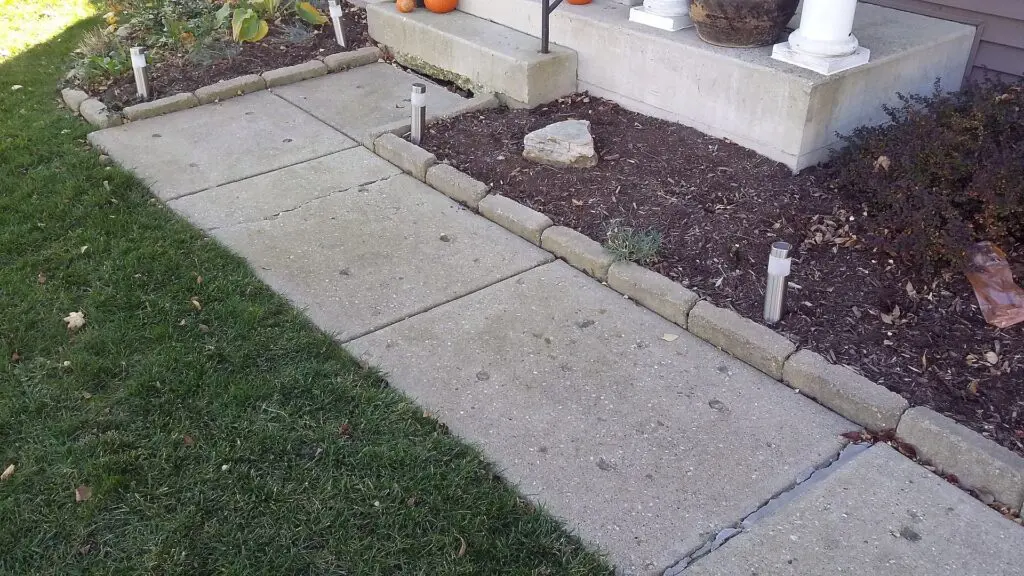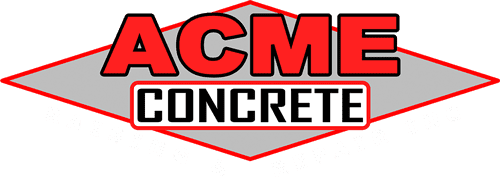
We learn as we go, as we do with many things in life. We do things the best we know how to do them until we learn a better way. Concrete raising is no exception. Over the last decade, the technology available to contractors has changed dramatically! For a very long time, mudjacking was the only option. Its shortcomings sparked the development of a better solution. As a result, a special polyurethane material was created as a far superior repair option to mudjacking. Polyurethane is rapidly replacing old mudjacking technology. Consequently, polyurethane is required on large highway projects and many other engineered repairs where mudjacking is not an option for repair. However, not all contractors have made the appropriate investment in polyurethane. This page will explain some of the fundamental reasons why you should never use mudjacking as a repair method.
Slurries: Mudjacking's Biggest Problem
Mudjacking is the process of raising concrete with a slurry. This “slurry” is usually composed of clay, sand, and water. Some contractors claim to include cement in their mix, while others do not. Other contractors, however, claim to use a concrete slurry. This is covered in detail in the following section. Regardless of the mixture used, all mudjacking contractors drill large holes through your concrete and pump a wet mixture beneath the slab to “float it up”.
No mudjacker is “certified” or accountable to a certifying body, as far as we know. You have no way of knowing what a mudjacker is putting beneath your concrete without third-party oversight, controls, or documentation. It’s difficult to know who to believe when every mudjacker claims to have a “special slurry” that outperforms the competition. As you can see, a fundamental issue with mudjacking is a lack of controls or inconsistency between contractors. We strongly advise only using certified contractors to avoid confusion and uncertainty.
We raise a lot of mudjacked concrete; it accounts for a large portion of our work. Witnessing the large, unsightly holes and cracks caused by failing mudjack material is a common occurrence for our crews. We take our time observing mudjacking failures. We inspect the drilled holes, cracks that have formed, and the mudjacking slurry that was used to raise it. Despite being sold as a “concrete slurry,” mudjacking materials show obvious signs of slumping and erosion, or nearly complete washout. We will take mudjacking material samples on occasion. We use these samples to better understand its characteristics and see how it stands up to our polyurethane in controlled testing: Poly vs Mud 1, Poly vs Mud 2
Every time we raise concrete that was previously mudjacked, we find remains of mudjacking material that are clearly not moisture resistant. Mudjacked concrete is not properly supported as mudjacking materials soften or wash away. With unsupported areas, sinking stresses and strains slabs, resulting in large cracks and uneven surfaces. When combined with large, unsightly mudjacking holes, concrete in this condition forces many people to bear the astronomical cost of replacement.
Concrete: It's The Problem, Not The Solution
Some mudjackers may try to “sell you” on a concrete slurry. They may say it’s “permanent” and claim it will not wash away. A truly high quality concrete mixture would in fact resist washout. However, based on our experience, all mudjacking slurries are not what their claimed to be and are subject to erosion.
A contractor’s salesman will always make an interesting case about how good their concrete slurry is for concrete raising. To sway you further, they may even try to scare you away from polyurethane. Mudjackers are notorious for pretending to have environmental concerns with poly, all the while using products made from polyurethane in their everyday lives. However, let’s not ignore the elephant in the room:
Concrete is the material your currently having a problem with. Adding more concrete is NOT the solution. This would be like having your basement flood, and a contractor suggesting you add more water to it. It just doesn’t make any sense.
FACT: Concrete would not settle as much as it does if it were not so heavy. Mudjacking (no matter the mixture) adds significant weight to an area that is prone to settlement. We raise a lot of mudjacked concrete. This alone supports the fact that heavy slurries promote future sinking. Here are the material weights that even the mudjackers can’t dispute: Mudjacking mud (or concrete slurry) will weigh at least 100 pounds per cubic foot, probably more. Our high-density polyurethane only weighs about 4 pounds per cubic foot.
In addition to the problem of excessive weight, a wet slurry will typically shrink as the water evaporates from the material. The shrinkage alone can allow raised concrete to drop. This accounts for why mudjacking companies are notorious for “over-lifting” slabs.
Aesthetics: Mudjacking Will Deface Your Concrete Surfaces
The need to raise concrete is often spurred by safety hazards. A perfect example are uneven joints causing trip hazards. Another common occurrence are sidewalks sinking at stoops that result in an excessively tall step up or down. Regardless of the issue, sinking is the problem, and raising is the solution. However, it’s really not just that simple. Aesthetics play a large roll in a customer satisfaction.
Consider the following situation. You’re trying to sell your house and have finally found a buyer. Of course, one of the first things a potential buyer will do is hire a home inspector to inspect the property. The inspection report includes a note stating that the front sidewalk has sunk, resulting in a tall step up to the front stoop. In fact, it’s a 9-inch step, which is in violation of the building code, which limits step riser height to 7.75-inches. You decide to hire a mudjacking company to raise the sidewalk in order to save the sale. The mudjacking company drills several 1-5/8 inch holes in the sidewalk and lifts it into place (temporarily).
You think you’re done – until the buyer sees the front sidewalk which has been defaced by the mudjacker and backs out of the deal. You’re back to trying to sell a house with a front sidewalk covered in large, unsightly patches. Many of our customers who have used mudjacking say they regret having it done.
Mudjacking Services: Why Do They Still Exist?
This is an excellent question! The short answer is that mudjackers find it easier and less expensive to stick with their existing equipment and know-how. It takes a long time and a lot of money for a company to catch up with such a vastly different technology! Mudjacking requires only basic mechanical mixing and pumping equipment. This type of equipment is relatively inexpensive and simple to use. Employee skills and training are also simplified.
Our polyurethane injection technology requires significantly more investment, skills, and training. Our injection systems are made up of several electromechanical components that must be operated and maintained correctly. We only employ certified installers with the necessary experience to properly raise and support concrete. To our advantage, we believe that our commitment to having the best equipment, materials, and highly trained employees says a lot about us as a company. We are fiercely competitive and will go to any length to remain the company that others strive to emulate.
We are Chicagoland’s Original Polyurethane Concrete Raising & Stabilization Specialists!

